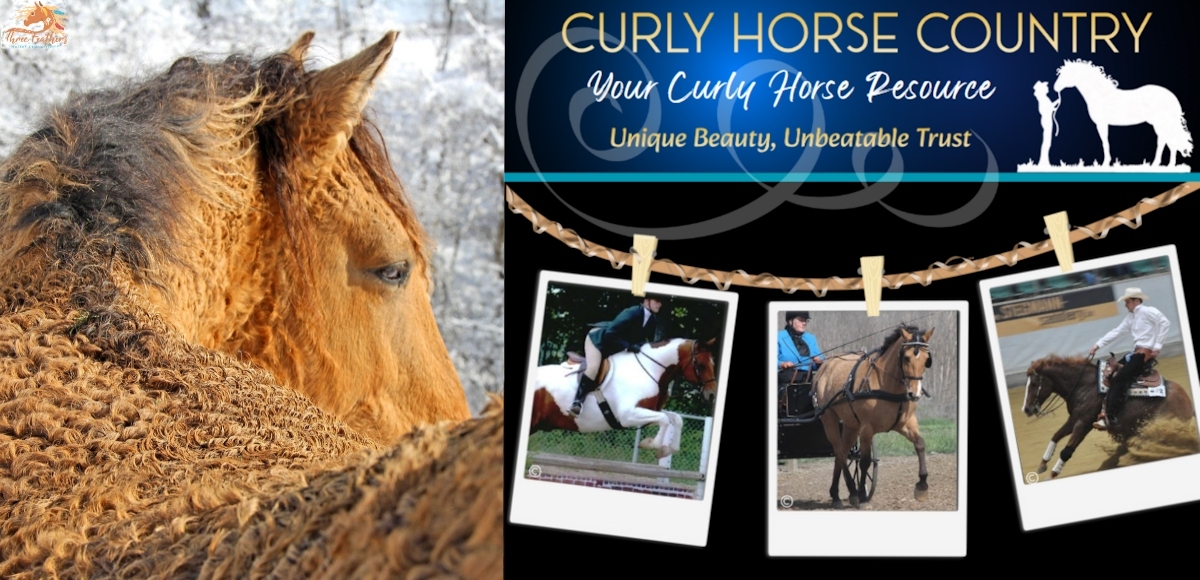A Curly Horse or Cushings Disease Horse?
You see a horse for sale or at an auction without documented pedigree. He/she has a curly coat and you wonder is this a true Curly Horse or is this a Cushings Disease Horse? This article is being written to help you determine the difference.
EQUINE CUSHING DISEASE : What is it?
First let's go over exactly what Cushings disease is and symptoms that will be present in horses afflicted with this disease. Cushiings is also known as Pituitary Pars Intermedia Dysfunction or PPID. Cushing's Disease is a dysfunction of the pituitary gland. It is most common in older horses (18 - 23 years) but has been seen in horses as young as seven. Since it is sometimes associated with Insulin Resistance, Cushing's can be confused with another condition called Equine Metabolic Syndrome.
The disease results in increased levels of cortisol leading to a compromised immune system, lethargy, muscle wastage, laminitis and often that 'tell tale' long curly coat. The disease can be confirmed by blood tests, and although cannot be cured, effective treatment can improve greatly a horse or ponies' quality of life.
The horse may appear to have a curly shaggy coat however on closer examination, other signs & symptoms could be present.
- Hypertrichosis (long, curly hair that DOES NOT SHED)
- No curls in ears or curly eyelashes. Sometimes they can have a slight wave to the mane.
- Body Conformation: little muscling along top line and rounded or pot bellied appearance.
- Sluggish and listless expression
- Fat deposits, especially along the crest of the neck and over the tail head
- Laminitis
- Increased drinking and urination
- Recurrent infections
- Abnormal sweating
- Absent reproductive cycle/infertility
- Neurologic deficit/blindness
Consulting a vet for an exam or options for testing is strongly suggested.
Here are some examples of a Cushings Horse. One thing I tend to notice is how shaggy their legs are too.

TRUE CURLY HORSE:
Unlke the Cushings Disease Horse, a Curly Coated healthy horse will have a curly coat and most often have additional curls in ears, curly eyelashes, curly fetlocks and curls in the mane. Not always will you see curls in every location, but you should see evidience of curls other places on the body. The curls will be uniform. You will see a well muscled top line in a healthy animal and one that is sound, active and with bright expression. Now in the cases where you find a curly at an auction house, feed lot or kill pen, consider neglect first. Be sure you don't see a true Curly Horse that may just need rehab.
Here are some examples of a Curly Horse. Click here for more examples
If you encounter a curly coated horse and are unsure, what can you do?
1. Consult a vet.
2. Ask other curly owners or breeders for help in identifying the horse in question.
3. If you can determine age, this may help as well. Although Cushings has been diagnosed in horses as young as 7, it is typically found in horses over 18.
4. KEEP IN MIND that true curlies can also develop cushings, just like any other breed. So if you see any of these symptoms in your curly be sure to have them tested EARLY. They can live a great life with supplement/treatment if caught soon enough.
NOTE TO BREEDERS:
Please register your animals and make sure the papers follow them when sold. This will make sure your precious curly is never misidentified as a cushings disease horse.
ICHO and ABC Registry

